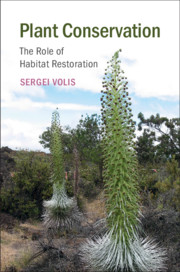Book contents
- Plant Conservation
- Plant Conservation
- Copyright page
- Epigraph
- Contents
- Foreword
- Preface
- 1 Introduction
- 2 The Concept’s Major Principles
- 3 Restoration of Threatened Species
- 4 Restoration of Threatened Species Habitat
- 5 Conservation-Oriented Restoration Silvicultural Toolkit
- 6 Conservation-Oriented Restoration of Particular Systems
- 7 From Theory to Practice
- Concluding Remarks and Prospects for the Proposed Strategy
- References
- Index
- References
References
Published online by Cambridge University Press: 26 February 2019
- Plant Conservation
- Plant Conservation
- Copyright page
- Epigraph
- Contents
- Foreword
- Preface
- 1 Introduction
- 2 The Concept’s Major Principles
- 3 Restoration of Threatened Species
- 4 Restoration of Threatened Species Habitat
- 5 Conservation-Oriented Restoration Silvicultural Toolkit
- 6 Conservation-Oriented Restoration of Particular Systems
- 7 From Theory to Practice
- Concluding Remarks and Prospects for the Proposed Strategy
- References
- Index
- References
- Type
- Chapter
- Information
- Plant ConservationThe Role of Habitat Restoration, pp. 357 - 470Publisher: Cambridge University PressPrint publication year: 2019



